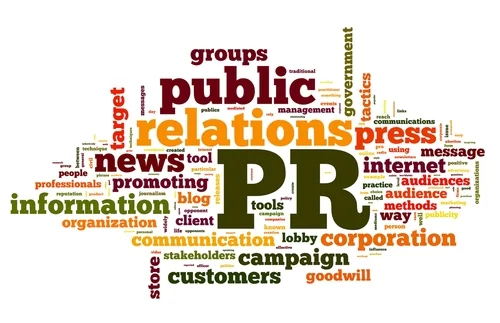In public information and public affairs, understanding the psychology of public perception is crucial for crafting effective communication strategies. Public information officers (PIOs) and public affairs officers (PAOs) must be aware of the cognitive biases that influence how individuals process information and form opinions. By recognizing these biases, PIOs and PAOs can tailor their messages to resonate with their target audience and achieve their desired outcomes.
Cognitive Biases: The Mental Shortcuts That Shape Our Perceptions
Cognitive biases are mental
shortcuts that our brains employ to simplify information processing. While these shortcuts can be helpful in certain situations, they can also lead to inaccurate judgments and distorted
perceptions. In public perception, cognitive biases can significantly impact how individuals
interpret and react to information disseminated by government agencies, non-profit organizations, and other entities.
Common Cognitive Biases That Influence Public Perception
Several cognitive biases play a prominent role in shaping public perception. Among the most notable are:
- Confirmation bias: The tendency to seek out and interpret information that confirms existing beliefs while disregarding or downplaying information that contradicts those beliefs.[i]
- Framing effect: How information is presented influences how it is perceived and evaluated.[ii]
- Anchoring bias: The tendency to rely heavily on the first piece of information encountered when making judgments, even if subsequent information indicates otherwise.[iii]
- Availability heuristic: The tendency to judge the likelihood of events based on how easily they come to mind.[iv]
- Stereotyping: The tendency to attribute generalizations about a group to individuals within that group.[v]
Understanding cognitive biases is essential for PIOs and PAOs to communicate with their target audiences effectively. By recognizing how these biases can influence perception, PIOs and PAOs can develop strategies to overcome them and ensure their messages are understood and acted upon.
- Addressing confirmation bias: Provide balanced and unbiased information, presenting supporting and opposing viewpoints.[vi]
- Leveraging framing effect: Frame messages positively and constructively, emphasizing the benefits and advantages of the conveyed information.[vii]
- Minimizing anchoring bias: Provide context and background information to help audiences make informed judgments.[viii]
- Countering availability heuristic: Use real-world data and examples to demonstrate the likelihood of events.[ix]
- Challenging stereotyping: Promote inclusive language and portrayals that reflect the diversity of the population.[x]
Strategies for Effective Public Communication in the Face of Cognitive Biases
In addition to understanding cognitive biases, PIOs and PAOs can employ several strategies to enhance the effectiveness of their public communication efforts.
- Emphasize storytelling: Use narratives and personal stories to connect with audiences emotionally, making information more memorable and impactful.[xi]
- Visualize information: Utilize infographics, charts, and other visuals to present complex information clearly and engagingly.[xii]
- Personalize messages: Tailor messages to specific audience segments, addressing their unique interests and concerns.[xiii]
- Promote transparency: Be open and honest about potential challenges or limitations, building trust and credibility with the audience.[xiv]
- Encourage dialogue: Foster open communication and dialogue with the public, addressing concerns and providing timely responses.[xv]
Conclusion
Navigating the intricacies of public perception requires a deep
understanding of the psychology behind individual decision-making. By recognizing and addressing cognitive biases, PIOs and PAOs can craft effective communication strategies
that resonate with their target audiences, promote informed understanding, and achieve desired outcomes.
[i] Kahneman,
D., Slovic, P., & Tversky, A. (1982). Judgment under uncertainty:
Heuristics and biases. Cambridge University Press.
[ii]
Tversky, A., & Kahneman, D. (1981). The framing of decisions and the
psychology of choice. Science, 211(4481), 457-463.
[iii]
Tversky, A., & Kahneman, D. (1974). Judgment under uncertainty: Heuristics
and biases. Science, 185(4157), 1124-1131.
[iv]
Tversky, A., & Kahneman, D. (1973). Availability: A heuristic for judging
frequency and probability. Cognitive Psychology, 5(2), 207-232.
[v]
Allport, G. W. (1954). The nature of prejudice. Addison-Wesley.
[vi]
Nyhan, B., & Reifler, J. (2010). When corrections fail: The persistence of
misinformation about political misdeeds. Political Psychology, 31(1), 3-30.
[vii]
Kahneman, D., & Tversky, A. (1984). Choices, values, and frames. American
Psychologist, 39(4), 341.
[viii]
Tversky, A., & Kahneman, D. (1974). Judgment under uncertainty: Heuristics
and biases. Science, 185(4157), 1124-1131.
[ix]
Kahneman, D., Slovic, P., & Tversky, A. (1982). Judgment under uncertainty:
Heuristics and biases. Cambridge University Press.
[x]
Dovidio, J. F., & Gaertner, S. L. (2014). On the nature of prejudice:
Prejudice, discrimination, and stereotyping. Psychology Press.
[xi]
Fiske, S. T., & Taylor, S. E. (2009). Social cognition. Sage Publications.
[xii]
Mayer, R. E. (2014). The science of learning. Oxford University Press.
[xiii]
Kotler, P., & Armstrong, G. (2019). Principles of marketing (17th ed.).
Pearson.
[xiv]
Fuller, S. L. (1999). Knowledge management systems: A comparison of three
frameworks. Journal of Information Systems, 13(2), 111-122.
[xv]
Lewicki, R. J., & Bunker, B. B. (1996). Psychological foundations of trust
in joint problem-solving groups. Research on Negotiations in Organizations, 5,
23-51.

Comments
Post a Comment